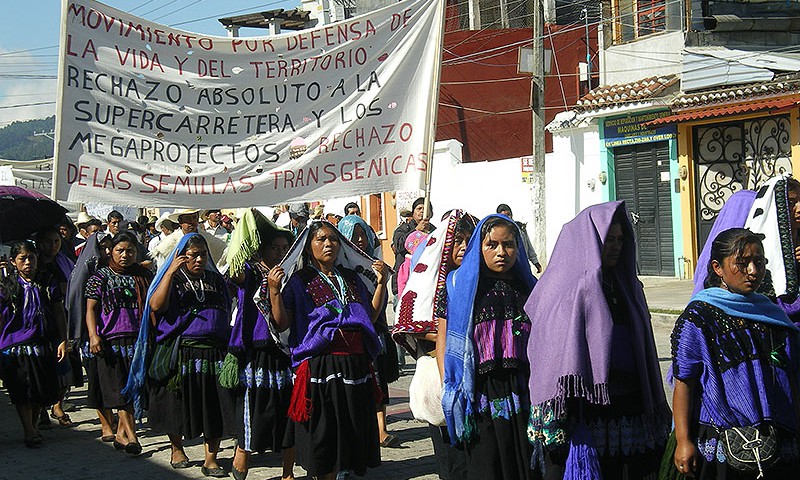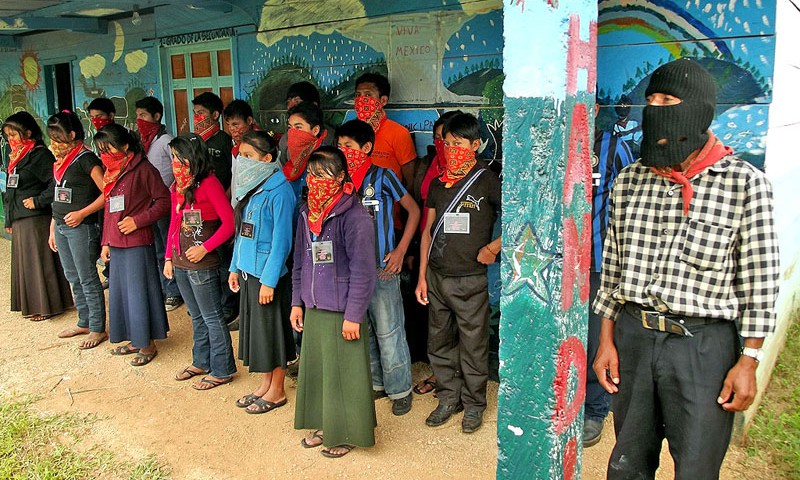Brief history of the conflict in Chiapas
The conflict in Chiapas (1994-99) cannot be defined as something spontaneous, but rather as the result of a long and complex process in the context of historical injustice.
Leading up to the conflict, there were several factors to which one can point:
1.- One characteristic of the conflict in Chiapas was the paradox of a rich state with one of the poorest populations in the country. In a state that produced 35% of the country’s electrical energy, 34% of its inhabitants did not have access to this service. In an area rich in natural resources, agriculture, and oil, nearly 60% of the population survived on the minimum wage. Sixty percent of school-age children were unable to attend school and the illiteracy level is 30%. Only 57% had access to potable water. Fifteen thousand indigenous people died in 1993 due to their impoverished conditions. [These statistics are from 1994. More recent sta-tistics indicate similar trends.]
2.- Indigenous peoples in the state faced heavy racial discrimination, even though they represented 30% of the state population and almost the entire population lived in the conflict area.
3.- Due to the exclusionary character of neo-liberalism and globalization, several other factors added to the high levels of marginalization of indigenous peoples:
The drop in coffee prices in 1989
The reform of article 27 of the Constitution in 1992 (to facilitate the commercialization of land) weakened the traditional ejido land system in the basic organizational structure of indigenous communities
The North American Free Trade Agreement (NAFTA) which came into effect January 1, 1994)
4.- The group that eventually founded the EZLN (Zapatista Army for National Libera-tion) entered the jungle in 1983 with a traditional guerilla profile. As explained by Subcomandante Marcos in subsequent writings, the contact with indigenous communities changed and broadened the movement’s perspective. This explains how, despite having a limited military force, the EZLN benefited from strong social support.
















